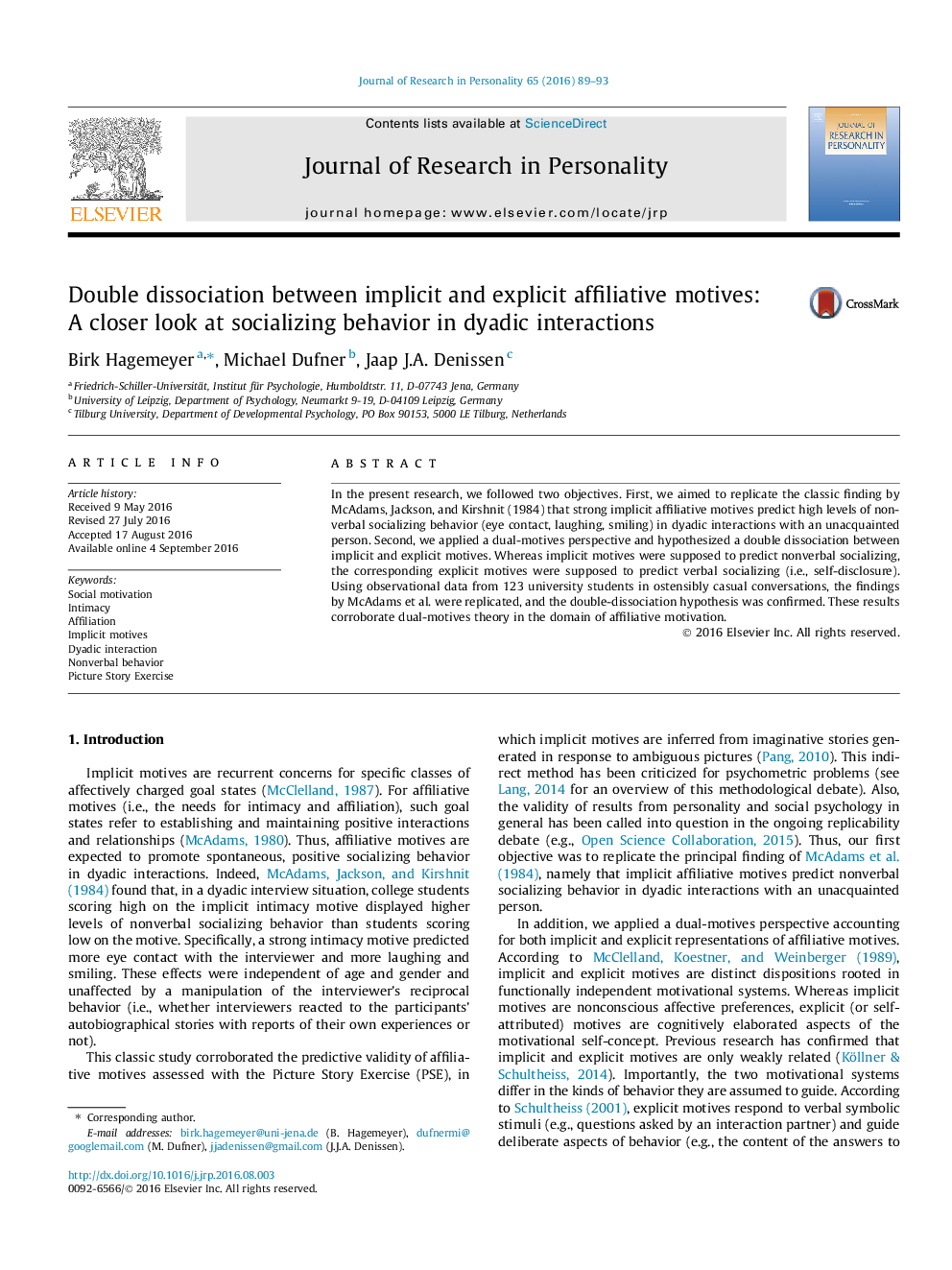| کد مقاله | کد نشریه | سال انتشار | مقاله انگلیسی | نسخه تمام متن |
|---|---|---|---|---|
| 5046270 | 1475933 | 2016 | 5 صفحه PDF | دانلود رایگان |
- Nonverbal and verbal socializing behavior during dyadic conversations was observed.
- The implicit affiliation motive uniquely predicted nonverbal socializing.
- The explicit affiliation motive uniquely predicted verbal socializing.
- The results corroborate dual-motives theory in the affiliative domain.
- Findings from McAdams, Jackson, and Kirshnit (1984) were replicated.
In the present research, we followed two objectives. First, we aimed to replicate the classic finding by McAdams, Jackson, and Kirshnit (1984) that strong implicit affiliative motives predict high levels of nonverbal socializing behavior (eye contact, laughing, smiling) in dyadic interactions with an unacquainted person. Second, we applied a dual-motives perspective and hypothesized a double dissociation between implicit and explicit motives. Whereas implicit motives were supposed to predict nonverbal socializing, the corresponding explicit motives were supposed to predict verbal socializing (i.e., self-disclosure). Using observational data from 123 university students in ostensibly casual conversations, the findings by McAdams et al. were replicated, and the double-dissociation hypothesis was confirmed. These results corroborate dual-motives theory in the domain of affiliative motivation.
Journal: Journal of Research in Personality - Volume 65, December 2016, Pages 89-93
